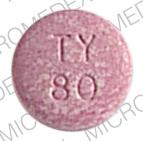Children's Tylenol Interactions
There are 159 drugs known to interact with Children's Tylenol (acetaminophen), along with 3 disease interactions, and 2 alcohol/food interactions. Of the total drug interactions, 8 are major, 115 are moderate, and 36 are minor.
- View all 159 medications that may interact with Children's Tylenol
- View Children's Tylenol alcohol/food interactions (2)
- View Children's Tylenol disease interactions (3)
Most frequently checked interactions
View interaction reports for Children's Tylenol (acetaminophen) and the medicines listed below.
- albuterol
- amoxicillin
- azithromycin
- baclofen
- Benadryl (diphenhydramine)
- budesonide
- cetirizine
- Children's Motrin (ibuprofen)
- Childrens Ibuprofen Berry (ibuprofen)
- Claritin (loratadine)
- Diastat (diazepam)
- diazepam
- Flonase (fluticasone nasal)
- gabapentin
- ibuprofen
- Keppra (levetiracetam)
- melatonin
- MiraLAX (polyethylene glycol 3350)
- Motrin Childrens (ibuprofen)
- multivitamin
- nystatin
- nystatin topical
- ondansetron
- oxygen
- Prevacid (lansoprazole)
- Probiotic Formula (bifidobacterium infantis / lactobacillus acidophilus)
- ranitidine
- triamcinolone topical
- Vitamin D3 (cholecalciferol)
- Zyrtec (cetirizine)
Children's Tylenol alcohol/food interactions
There are 2 alcohol/food interactions with Children's Tylenol (acetaminophen).
Children's Tylenol disease interactions
There are 3 disease interactions with Children's Tylenol (acetaminophen) which include:
More about Children's Tylenol (acetaminophen)
- Children's Tylenol consumer information
- Compare alternatives
- Pricing & coupons
- Drug images
- Latest FDA alerts (21)
- Side effects
- Dosage information
- During pregnancy
- Drug class: miscellaneous analgesics
- Breastfeeding
- En español
Related treatment guides
Drug Interaction Classification
| Highly clinically significant. Avoid combinations; the risk of the interaction outweighs the benefit. | |
| Moderately clinically significant. Usually avoid combinations; use it only under special circumstances. | |
| Minimally clinically significant. Minimize risk; assess risk and consider an alternative drug, take steps to circumvent the interaction risk and/or institute a monitoring plan. | |
| No interaction information available. |
Further information
Always consult your healthcare provider to ensure the information displayed on this page applies to your personal circumstances.


